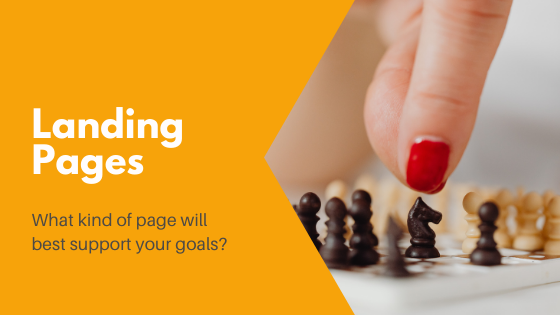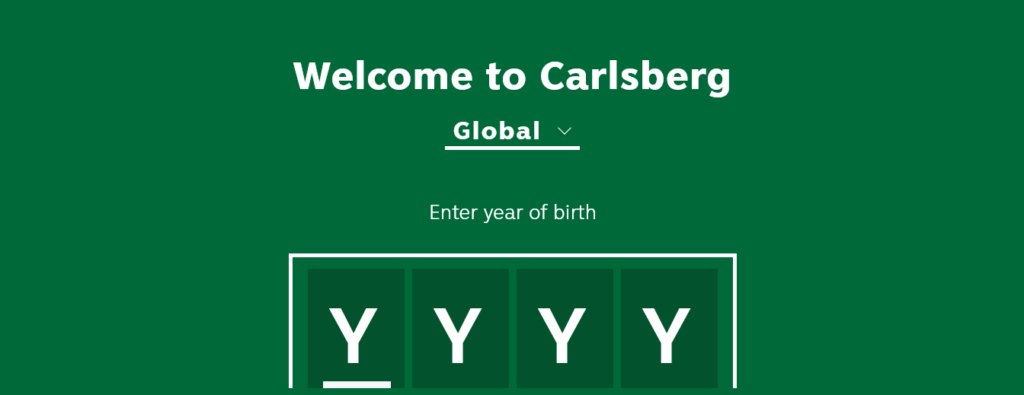Know the different types of landing pages and when to use them to achieve your goals.

What is a landing page?
Before we get into the different types of landing page and how to choose the right one to support your goals, it’s important we first understand what a landing page even is—and how they work.
A landing page is a page created to serve a defined marketing purpose, such as to capture leads or generate sales. In other words, you build a landing page to convince people to do something.
Landing pages tend to be standalone pages that users “land” on after clicking on a link from an email campaign, search, or social media ads. And they are valuable assets in any marketing strategy, for almost any business in any industry, because they work.
That is, the average conversion rate ranges from 2.6% to 6.1% depending on industry. That’s pretty good, right?
So how do landing pages work?
In a nutshell:
- Laser-focused copy attracts a very specific segment of the market you’re targeting.
- Compelling copy keeps readers on the page—and moves them to take action.
- One call to action, combined with no or minimal exit navigation options, allows for a distraction-free conversion process.
It would be a great idea to read more about how landing pages are used – plus the many small business benefits of landing pages – in conjunction with this post.
Creating your first landing page?
If this is your first time creating business landing pages, all your options – that is, the types of landing pages you can choose from – and various best practice guides can make the development process feel pretty overwhelming.
But more importantly, if you’re going to invest valuable resources (time and money) into setting up landing pages, you want one that will actually yield results. It has to make users convert!
So where do you begin?
Or rather, what are the main differences and key benefits among all the landing page options? When should you use a certain style of landing page? And how do you decide, which type of landing page to choose?
We’ll answer those questions as we explore the kinds of landing pages you can choose from below.
Types of Landing Pages
1. Lead capture landing page
This type of landing page goes by many names: lead capture landing page, lead generation landing page, squeeze page and also opt-in page. And when you think of landing pages, lead capture landing pages are probably the type of page that comes to mind.
As its name suggests, the goal of a lead capture page is to capture information about your users. Things like their name, email address, and even phone number. If you’re in the B2B sector, that might also include additional information like the company name, business size, industry, location (ZIP code, city, or state) and the person’s job title.
Mind you, you’re not going to get that information for free—you have to give something valuable in return.
For instance:
- Access to discount codes and special promotions
- A free trial
- Downloadable content (called lead magnets) such as a white paper, an e-book, cheat sheets, product catalogue and price sheet, etc.
Lead capture landing pages tend to be short-form. That is, they aren’t particularly long or filled with paragraph upon paragraph of copy.
Here are a few other distinct features of lead capture landing pages:
- They have a form that’s easy to spot and simple to complete.
- There’s no other (read: outward) navigation from the page.
- It has only one call to action with corresponding button(s).
Use a lead capture landing page when you want to build a high-quality email list; gain useful insights on your actual audience; or maybe even to encourage people to get in contact with you or submit an inquiry.
2. Click-through landing page
Click-through landing pages are a very important tool in your sales-boosting arsenal. These are essentially the middlemen or go-between, between an ad (or the search engine) and the shopping cart (or purchase page).
In other words, it’s the page that prepares a lead – warms them up, persuades them – in order to get them to convert. As such, click-through pages have just enough information to propel people towards making the purchase—they’re willing to move on to the transaction page.
The unique features of this type of page are as follows:
- There’s only one place to go from here: the purchase page.
- Content-wise, these pages are incredibly versatile. In addition to the requisite eye-catching headline, compelling copy and a visible call to action button, you can also use bullet points, add testimonials and videos and even throw in a location map.
- There’s no hard selling here – it’s all about informing.
Who would benefit most from click-through landing pages?
Anyone who has to first eliminate a potential client’s hesitation to buy right this moment should think about creating click-through landing pages. That is, as long as you need to convince people to make a purchase, then it makes absolute sense to invest in click-through landing pages!
Click-through landing pages are a stress-free environment for prospects to explore your product in greater detail—or get to know you better. As such, e-commerce businesses, consultants, service providers and freelancers are among those that can enjoy a boost in conversions from click-through landing pages.
3. Long-form landing page
From the short-form landing page of #1, we move on to a long-form landing page.
Long-form landing pages are also sometimes referred to as a long-form sales pages, sales letter landing pages, or simply as sales pages. As you can imagine, they are the infomercials of the internet.
When we say long-form, we mean long. Some long-form landing pages can even reach a whopping 30,000 words! (Although, if you ask me, I’m personally not a fan (as a consumer) of those that exceed 7,000 words. Frankly, I have serious doubts if those super lengthy ones really get read—in full and in one sitting—in our time of dwindling attention spans.)
These types of landing pages are incredibly detailed. They cover every aspect of the product, service or offer, highlighting and repeating (in different ways) the various benefits to drive home a point, persuade the reader—and land the conversion!
Keep in mind that the more time a person spends on the long-form landing page, the higher the likelihood they will convert.
Distinct features of long-form landing pages include:
- They’re strategically written to move readers down the page towards the call to action.
- Stylistically, you’ll find everything from paragraphs to bullet points, lists, and even pull quotes for visual flair.
- There’s a call to action button, usually to sell something. In other words, the reader is invited to make a purchase on the page, at that exact moment.
So when should you use a long-form landing page?
Ultimately, the goal here is to sell something—to finally clinch the deal. That in mind, they’re most useful if deployed on individuals who are (1) far enough along in their purchase journey and (2) already at the bottom of the sales funnel. These people are at a point where they’re ready to buy and therefore more receptive to your virtual sales pitch.
4. Product details landing page
This is essentially your standard in-depth product page. In other words, it’s where users go to read more about your products or services. Aside from product / service details, your page will have photos and – if available – testimonials or product reviews for social proof.
Here’s what makes a product details landing page different to other landing pages:
- They are a part of your main website.
- These pages have outside navigation and have a spot in your menu.
- Users can complete the purchase on this page (e.g. add to cart) or be connected with a sales rep for the next steps.
Almost every business will have at least one product details landing page.
5. Video landing page
As you probably guessed, this type of landing page features a video. Typically, that’s a sales or promotional video and it’s the star of the page. But the video shouldn’t be too long so that you are able to keep the person’s attention.
What makes video landing pages effective is that they’re (1) memorable and (2) particularly great at engaging the user. That aside, for some people, videos are simply easier to consume than lengthy text.
Here’s what you need to know about video landing pages:
- The video is strategically located above the fold, i.e. the top part of the landing page, before the need to scroll.
- Aside from the video, there’s an attractive headline and some accompanying copy.
- The goal is to get users to, ideally, watch the whole video or at least reach a certain point in the video.
When is a good time to use a video landing page?
You’ll find these types of landing pages useful if you’re selling high-involvement / expensive products and services (that need a powerful introduction or to propel the user down the sales funnel); if you’re offering a course or webinar; for photogenic products; to market a hotel; and if you’re targeting video-loving Gen Z consumers.
Is a splash page a landing page?
While landing pages are developed to drive users to complete some kind of action, splash pages are intermediary pages used to share limited (but still important) information.
Put another way, users must first get past the splash page to land on the desired page. For this reason alone, marketers must have a very good and valid reason for using them.
For example: To confirm a user’s age or to allow visitors to select a region or preferred settings. See below.

In short, you use splash pages to make necessary announcements, to confirm something, or so that visitors can indicate their preferences.
How to choose the landing page you need
At this point, your next question might be how to decide what kind of landing page you need.
Well, the descriptions of the different types of landing pages, as well as the examples listed above, are a great starting point. But you can also come to a decision by asking yourself the following questions.
- What role will the landing page have in your digital marketing strategy?
- What do you want people to do on the page?
- How long will this page be active?
- How are your competitors achieving the same goals?
- What do your visitors want to achieve when they land on this page?
- How will people get to this page? For example: Where will they be coming from? What are they clicking on to get to this page?
- What are you capable of creating, i.e. in terms of time, financial resources, and even skills?